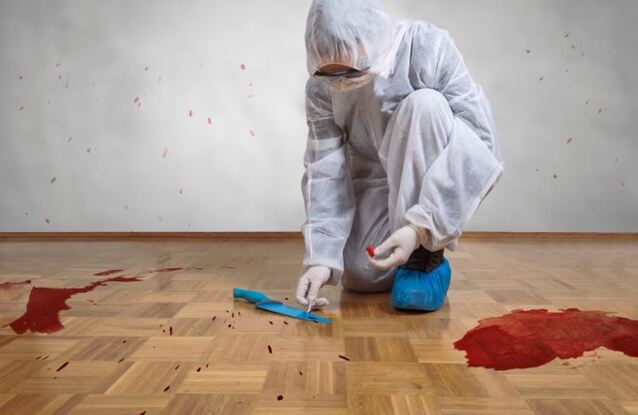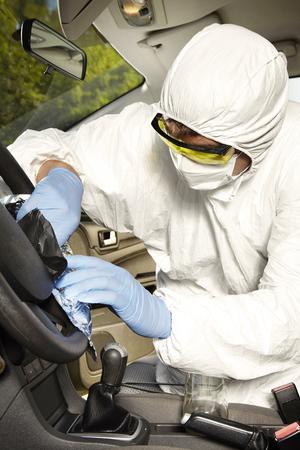Decomposition Death Clean Up: Specialized and Respectful Remediation
Decomposition Death Clean Up: Specialized and Respectful Remediation
Blog Article
Expert Biohazard Cleansing and Decontamination for Blood, Bodily Fluids, and Hazardous Products
The potential health and wellness risks associated with exposure to biohazards highlight the vital need for precise handling and complete cleaning. As we navigate the elaborate landscape of biohazard cleaning, understanding the nuances of laws, compliance, and the specific devices at play comes to be imperative in guaranteeing a complete and secure decontamination process.
Health And Wellness Risks of Biohazard Direct Exposure
Direct exposure to biohazards poses considerable health and wellness dangers that can result in serious effects for areas and individuals alike. Biohazards encompass a vast array of biological substances, including blood, bodily fluids, mold, microorganisms, infections, and various other possibly infectious materials. When people enter into call with these biohazards, whether via accidents, improper handling, or environmental direct exposure, they face the risk of contracting serious health problems or diseases.
One of the key health risks connected with biohazard exposure is the transmission of infectious diseases. Bloodborne pathogens such as HIV, liver disease B and C, and numerous germs can be present in biohazardous materials, posing a direct threat to human wellness. Breathing in air-borne biohazards like mold spores or entering into call with infected surface areas can additionally result in breathing problems, allergies, and other adverse health and wellness impacts.
Additionally, biohazard exposure can have long-lasting health implications, with some conditions materializing years after the preliminary contact (Blood Cleanup). Consequently, it is vital to focus on appropriate biohazard cleaning and purification to reduce these health threats and ensure the security of communities and people

Specialized Educating for Biohazard Cleaning
When it pertains to handling biohazard clean-up successfully and safely, specialized training plays a fundamental function in ensuring proper purification treatments are adhered to. Biohazard cleanup requires certain understanding and skills to properly alleviate dangers related to bloodborne microorganisms, bodily fluids, and unsafe products. Professionals learnt biohazard cleaning go through strenuous guideline on how to safely manage, get rid of, and get rid of biohazardous products to stop contamination and direct exposure.
Specialized training for biohazard cleaning covers a range of vital subjects, consisting of correct individual safety devices (PPE) usage, bloodborne microorganism understanding, purification methods, and contaminated materials disposal methods. Individuals learnt biohazard cleanup are geared up with the required experience to assess contamination degrees, recognize possible threats, and implement ideal clean-up procedures in conformity with regulative criteria.
Constant training and education and learning are extremely important in the field of biohazard cleanup to stay updated on the most recent decontamination technologies, safety and security protocols, and laws. By spending in specialized training, biohazard clean-up specialists can effectively react to emergency situation cleaning situations and safeguard both public health and wellness and the atmosphere.
Value of Correct Decontamination Techniques
Using appropriate purification methods is vital in biohazard clean-up to effectively eliminate unsafe materials and decrease health and wellness dangers. Effective decontamination not only makes sure the elimination of noticeable traces of blood, physical liquids, and other biohazards yet also targets undetectable virus that might pose severe health and wellness threats otherwise properly eradicated. By complying with rigorous purification protocols, trained professionals can significantly reduce the danger of exposure to unsafe microorganisms, viruses, and microorganisms that might cause diseases or infections.
Appropriate decontamination strategies involve using customized tools and disinfectants that are especially designed to counteract biohazards properly. Complete cleansing and sanitation of infected locations are vital to protect against the spread of microorganisms and guarantee a secure setting for residents. Furthermore, the right disposal of biohazardous waste complying with purification procedures is crucial in stopping contamination of other surface areas or individuals.

Devices and Devices for Safe Cleaning
The correct equipment and devices play an essential function in guaranteeing the efficient and risk-free cleaning of biohazardous materials. When dealing with blood, bodily liquids, or dangerous products, biohazard cleansing professionals depend on specialized gear to reduce direct exposure threats and completely sanitize the damaged area. Personal safety devices (PPE) such as gloves, goggles, coveralls, and masks are vital to secure versus direct contact with potentially transmittable products. Additionally, biohazard cleaning sets having disinfectants, absorbent products, and biohazard bags are made use of to securely dispose and include of polluted items. Blood Cleanup.
Advanced cleaning tools like hospital-grade anti-bacterials, HEPA-filtered vacuum cleaners, and misting devices are used to sterilize surfaces and eliminate biohazards effectively. Specialized devices such as sharps containers and biohazard waste disposal containers are utilized to securely manage sharp items and biohazardous waste products. By making use of the appropriate devices and devices, biohazard cleaning professionals can guarantee a detailed cleaning process that prioritizes security and lessens wellness risks for both employees and occupants of the damaged room.
Regulations and Conformity in Biohazard Cleansing
Proper adherence to policies and conformity standards is extremely important in biohazard cleansing to ensure the security of both personnel and the environment. Government firms such as OSHA (Occupational Safety and Wellness Administration) and the EPA (Epa) have developed certain guidelines for biohazard cleaning procedures to minimize health risks and environmental contamination. These guidelines cover a variety of facets consisting of the handling, transport, and disposal of biohazardous products, in addition to the needed training and safety equipment needed for employees involved in the cleanup procedure.
Biohazard cleaning business should stay up-to-date with these policies to guarantee that their procedures satisfy the required security clean up blood/body fluids standards. Failure to comply with these biohazard crime scene cleanup job guidelines can lead to serious effects, consisting of penalties, lawsuit, and jeopardizing the health of people and the atmosphere. By adhering to stringent regulations and compliance procedures, biohazard cleaning business can efficiently reduce threats and guarantee a risk-free and extensive cleanup procedure for all events involved.
Final Thought
To conclude, biohazard cleaning and decontamination call for specialized training, proper strategies, and adherence to laws. Exposure to blood, bodily liquids, and hazardous products presents considerable wellness dangers, making it essential to utilize the ideal equipment and tools for safe cleaning. By following stringent protocols and guidelines, experts can efficiently mitigate the threats related to biohazard direct exposure and make sure the safety of both themselves and others.
As we navigate the detailed landscape of biohazard cleaning, understanding the subtleties of laws, conformity, and the customized equipment at play comes to be important in making certain a complete and risk-free purification procedure. (Blood Cleanup)
When it comes to managing biohazard cleaning efficiently and safely, specialized training plays an official statement essential function in making certain correct purification procedures are adhered to.Making use of appropriate decontamination methods is essential in biohazard clean-up to efficiently reduce and get rid of dangerous materials wellness dangers. In addition, biohazard cleaning sets consisting of disinfectants, absorbing products, and biohazard bags are made use of to safely include and get rid of of infected items.
Government companies such as OSHA (Occupational Safety And Security and Health And Wellness Administration) and the EPA (Environmental Defense Agency) have developed particular standards for biohazard clean-up procedures to reduce health and wellness dangers and ecological contamination.
Report this page